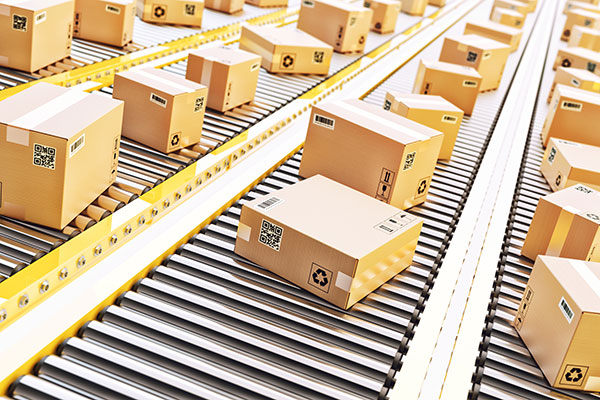LM reader survey indicates 2021 Peak Season is expected to be more active than 2020
A Logistics Management readership survey of more than 100 freight transportation, logistics, and supply chain stakeholders found that there is strong sentiment that the 2021 Peak Season will be more active than it was a year ago, with 79% of respondents indicating that will be the case, with 16% contending it will be similar to 2020, and 5% expecting it to be less active.
With summer in full swing, many freight transportation, logistics, and supply chain stakeholders are gearing up for the traditional fall Peak Shipping season. But coming off of more than 15 months of activity across myriad modes and verticals that has been far from typical, due to the pandemic, many stakeholders make the argument that there has been a permanent Peak Season, of sorts, going back to the onset of the COVID-19 pandemic.
There are many reasons for that, to be sure, including consumers adhering to shelter-in-place measures and not going to stores, instead ordering just about anything they needed online, or through heavy e-commerce activity, which eventually strained logistics and delivery networks to never before seen levels. But while people were turning to e-commerce, things economically were very strained compared to a year ago, as evidenced by myriad jobs and business losses, as well as the general feeling of pandemic-driven unease.
Now, one year later, it is evident things are trending up, with people getting vaccinated, businesses re-opening, and a general sense that things are getting back on track to pre-pandemic times. So, what does that mean for the 2021 Peak Season?
A Logistics Management readership survey of more than 100 freight transportation, logistics, and supply chain stakeholders found that there is strong sentiment that the 2021 Peak Season will be more active than it was a year ago, with 79% of respondents indicating that will be the case, with 16% contending it will be similar to 2020, and 5% expecting it to be less active.
Reasons cited by respondents expecting this year’s Peak Season to be more active than a year ago included things along the lines of higher import levels, new orders growth, increased demand, an improving economic outlook, and the pandemic being in decline.
“As the economy is opening back up, more companies are starting to ship out overdue orders, which will be reflected in this year’s Peak Season,” noted a respondent.
Another respondent observed that he thinks things will be more active than last year, but only slightly more active than what is occurring in a post-covid non-peak anomaly, adding that the container bottleneck on the import side is going to create more port demand.
But that comes with a price, according to respondents, in the form of things like ongoing port congestion issues, container shortages, and global labor shortages, too, coupled with tight over-the-road capacity.
As for the impact Peak Season on day-to-day operations, 51% of survey respondents described it as very significant, 43% called it somewhat significant, and 3% and 2% said it had no impact or was not very significant, respectively. And 74% of survey respondents noted that Peak Season had an impact on day-to-day operations, with the remaining 26% saying it did not, and 68% think this year’s Peak Seasons will have more of a normal feel to it, due to more people getting vaccinated.
Chris Rogers, research director for global trade intelligence firm Panjiva, said that import levels over the second half of the year will be telling, in terms of how things end up for Peak Season.
“We have gotten almost all the way to Peak Season without there being a slowdown,” he said. “But we are still a little bit away from that and the industry has issues to work through. The Yantian [China] port has been re-opened for a couple of weeks, and it is going to take a while for those issues to work through the system. The latter part of this year may actually be more characterized more so by the supply side than the demand side.”
Todd Tranausky, vice president of rail and intermodal for freight forecasting firm FTR, said that some current themes, in form of congestion-based delays and labor issues at ports will loom large for this year’s Peak Season.
“Those types of things can cause difficulties on the intermodal side, too, in getting goods on an off of ramps, as well as having containers that are not necessarily accessible to a shipper when expected,” he said. “You are going to see that continue and potentially get worse, as additional [Peak Season] volumes are added to the system. A big question, for all of this, becomes what happens if congestion worsens, as evidenced by some ocean carriers not calling on the Port of Oakland to bypass, or ship, some of that congestion. That puts additional carriers into other ports and puts volumes into those ports that maybe the beneficial cargo owners and carriers were not necessarily expecting to have to move at those other ports. To the extent in which that continues, port congestion will continue to be an issue for everybody, whether it is a port, a railroad, or a shipper.”
And he added that this leads to an industry-wide question, focused on how to deal with these issues in a way that provides what shippers want most—consistency, in the form of delivery and transit times, with carriers needing to be able to give shippers confidence that each and every time a container is moved, it is going to be seven days and not 14 or six days.
“The challenge for carriers this Peak Season is going to be getting their on-time percentage up to a level where shippers can count on it to build up their supply chains.













